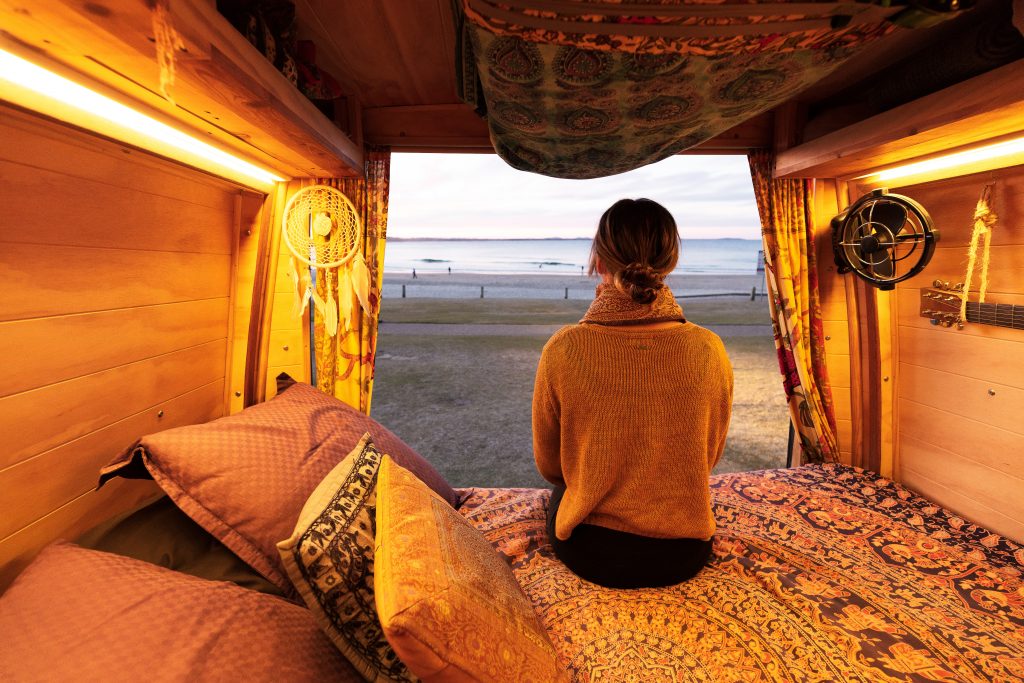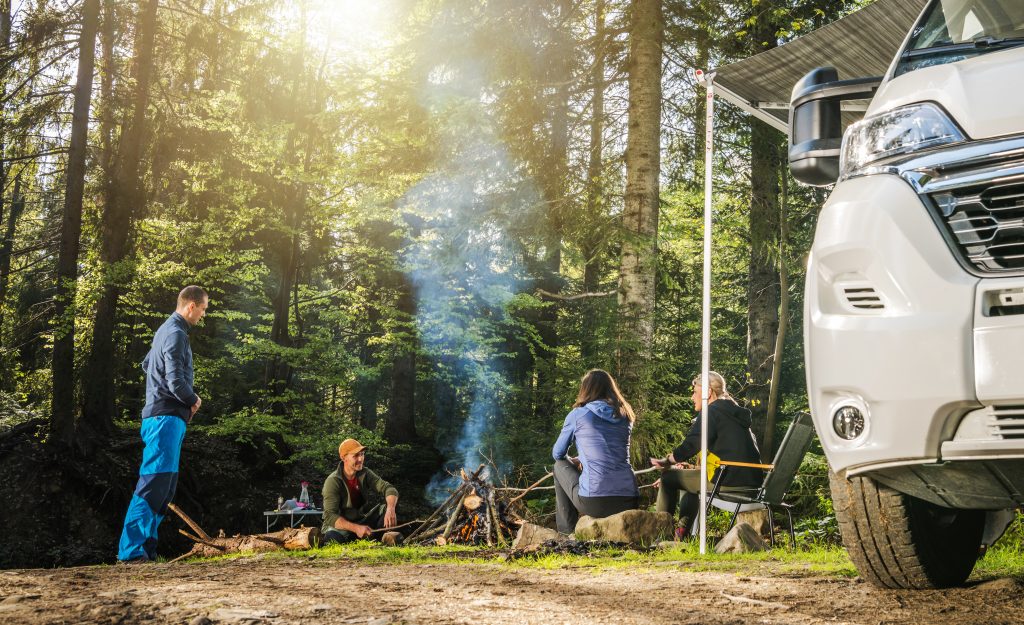The 3/3/3 Rule of RVing For Beginners
There’s a certain allure to the open road that pulls in many intrepid travelers. The notion of packing up your RV and hitting the road, traveling at your own pace, seeing the sights you want to see, and living life to the fullest is one that holds tremendous appeal.
As you embark on your RVing journey, one concept you’ll encounter is the 3/3/3 rule. But what is it, and how can it shape your RVing experience?
What is the 3/3/3 Rule?
The 3-3-3 rule is a simple, yet effective guiding principle for those on the open road. It suggests that while traveling in your RV, you should aim to drive no more than 300 miles or for more than 3 hours a day, and arrive at your destination by 3 p.m., and stay at your destination for at least 3 days. This is by no means a hard and fast rule, but rather, a guideline to help make your RV journey more enjoyable and less stressful.
The 3-3-3 rule is ideal for those who want to savor the journey and explore the beauty of their surroundings. It’s not just about the destination, but also about taking the time to appreciate the journey itself.
Why Stay At Least 3 Nights Somewhere?

A big part of the RVing experience is exploring new places and immersing yourself in different environments. By staying at least three nights in one place, you give yourself ample time to explore the area, enjoy the local attractions, and soak in the atmosphere.
Staying three nights also provides a sense of stability and relaxation. After the third night, you will likely feel settled and have developed a routine. This leads to a more relaxing experience and reduces the stress and fatigue of constant traveling.
Longer stays also foster a sense of community. You’ll get to know fellow RVers, share stories, advice, and even form lasting friendships. Plus, local communities often appreciate RV travelers who take their time to learn about the local culture, history, and traditions, rather than just passing through.
Why Arrive Before 3 p.m.?
Arriving before 3 p.m. is crucial to avoid inconveniences and potential hazards at many RV parks and campgrounds. Typically, attendants are available only from 10 a.m. to 3 p.m., and dealing with issues like faulty hookups or double bookings is much simpler with on-site personnel. Leaving earlier may seem like enough time, but unpredictable road events can delay your arrival, leading to setting up in the dark. Arriving before 3 provides ample time to safely settle in, minimizing errors, reducing stress, and allowing you to relax, make dinner, and explore the area.
Planning Your Road Trip Around The 3/3/3 Rule
Integrating the 3-3-3 rule into your road trip planning can seem daunting at first, especially when you’re eager to see as much as possible. However, it’s essential to remember that a more relaxed pace leads to a more fulfilling travel experience.
Start by mapping out your desired route, identifying potential stopping points along the way. Break your journey into manageable segments, each no more than 300 miles or 3 hours of drive time. Consider factors like terrain, weather, and traffic, as these can significantly affect your driving times.
Next, identify places where you’d like to stay for at least three nights. These could be national parks, coastal towns, historic sites, or even cities. The goal is to find locations that offer plenty of interesting activities and attractions to keep you engaged during your stay.
Ensure your destinations have suitable campgrounds or RV parks, and if possible, book your spots in advance. Arriving by 3 p.m. gives you plenty of time to set up your RV, unwind, and maybe even meet some of your neighbors before nightfall.
Creating A Travel Day Routine Using the 3/3/3 Rule
A successful RV trip isn’t just about the places you visit; it’s also about creating a routine that works for you, particularly on travel days. Having a routine can help you stay organized, reduce stress, and make the most of your travel experience.
Your travel day routine might begin with a leisurely breakfast and a final walk around your campground. This is the perfect time to enjoy the peace and quiet of the early morning, take a few photographs, and say goodbye to any friends you’ve made.
Next, you’ll start the process of preparing your RV for the journey. This includes tasks like securing loose items, checking your tires, and disconnecting from the campground’s utilities.
If you’re traveling with a partner or family, assign everyone a role to make this process quicker and more efficient.
Once you’re on the road, take regular breaks to stretch your legs, have a snack, and enjoy the scenery. This is not just about reaching your destination; it’s about enjoying the journey, so don’t rush.
Don’t forget to incorporate rest days into your plan. Traveling, even at a relaxed pace, can be tiring. Regular rest days will allow you to recharge and maintain enthusiasm for the journey ahead.
Other Benefits of the 3-3-3 Rule

The 3-3-3 rule offers a balance of travel, exploration, and relaxation, making it ideal for novice and seasoned RVers alike. Following this rule will not only reduce the stress often associated with long-haul travel but will also enable you to truly embrace the RVing lifestyle.
By driving no more than 300 miles or 3 hours a day, you’ll have more energy to enjoy your evenings and explore your surroundings. You’ll also reduce the wear and tear on your RV and lower the risk of driver fatigue, which can lead to accidents.
Arriving by 3 p.m. allows for a more leisurely setup of your RV and leaves you plenty of daylight to familiarize yourself with the local area. You can explore your surroundings, find local amenities, and maybe even take a hike or a dip in the lake before dinner.
Staying at least three nights in one place gives you a real taste of the local area. You’ll have time to visit attractions, try out local eateries, and engage with the community. It’s a chance to slow down, immerse yourself in a new environment, and make lasting memories.
Beyond the 3/3/3 Rule
While the 3-3-3 rule is a valuable guideline, remember that it is just that – a guideline. Some days, you may want to drive a little further to reach an exciting destination, or you might decide to extend your stay in a place you particularly enjoy. Don’t be afraid to deviate from the rule when it suits you.
RVing is about freedom, exploration, and adventure. It’s about making your own way and following your own rules. So, while the 3-3-3 rule can provide a great foundation for your RVing experience, the most important rule is to enjoy the journey, take in the sights, and make the most of every moment on the open road.
Finally, In Summary
The 3-3-3 rule of RVing is a principle designed to enhance your road trip experience, enabling a balance of adventure and relaxation. It promotes a slower pace of travel, more time for exploration, and a chance to create deeper connections with the places you visit.
So, as you plan your next RVing adventure, consider the 3-3-3 rule. Embrace the slower pace, enjoy the journey, and savor the incredible experiences that RVing has to offer. It might just change the way you view travel forever. Safe travels!
Where will you RVnGO next?